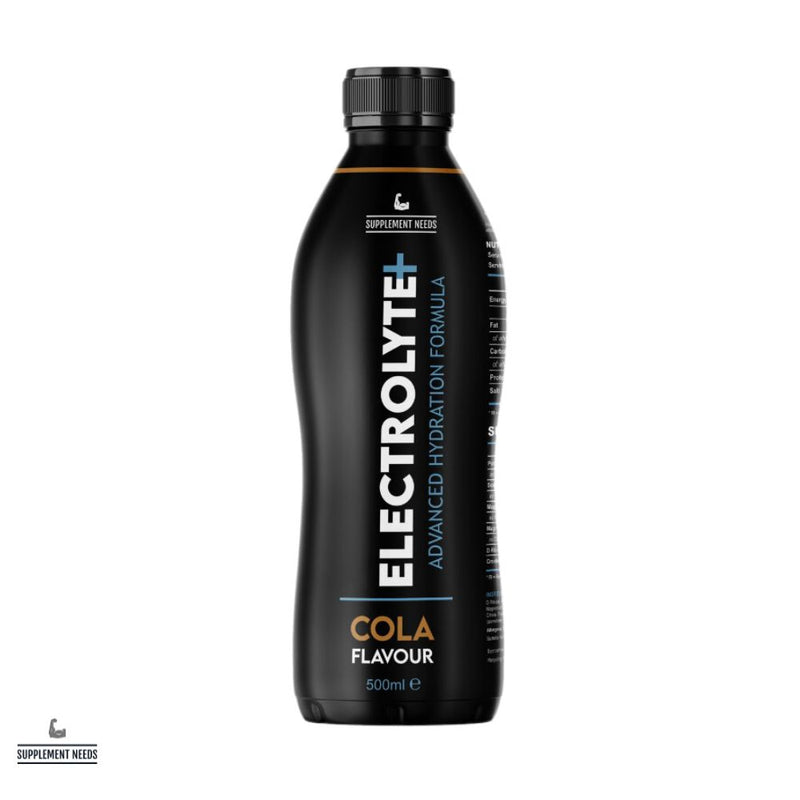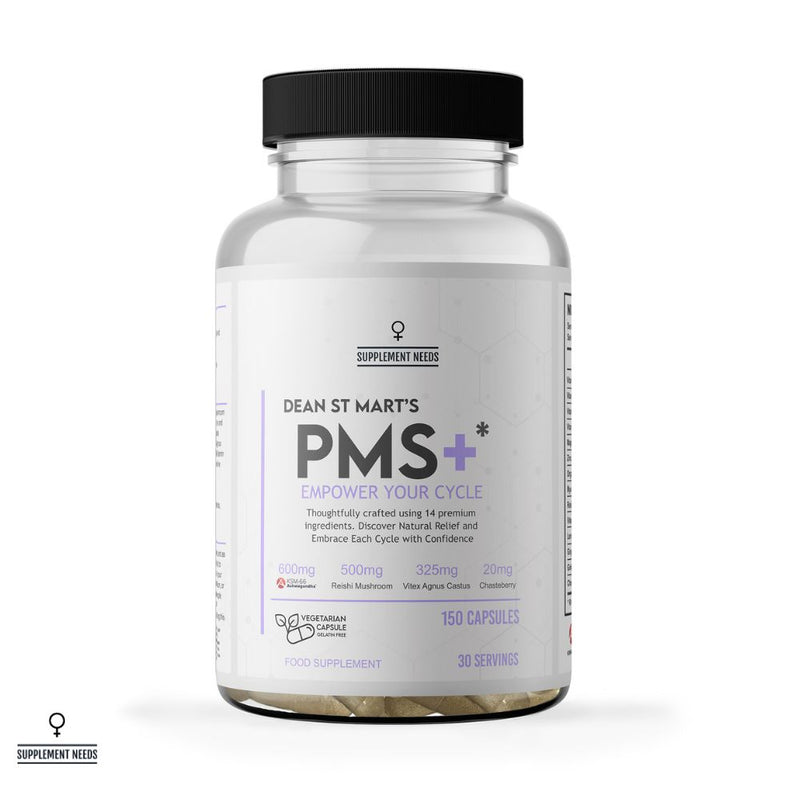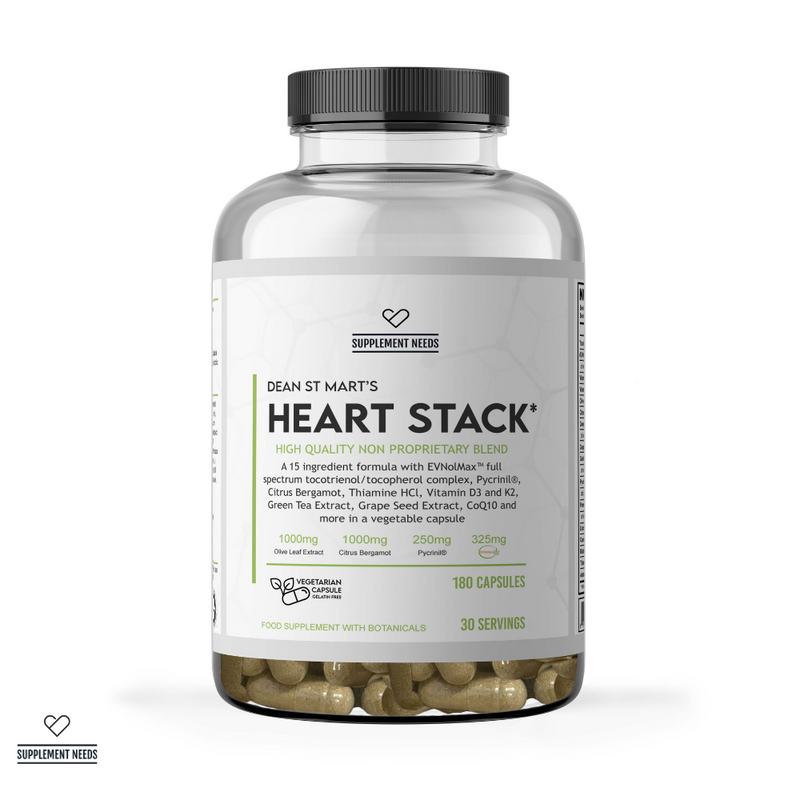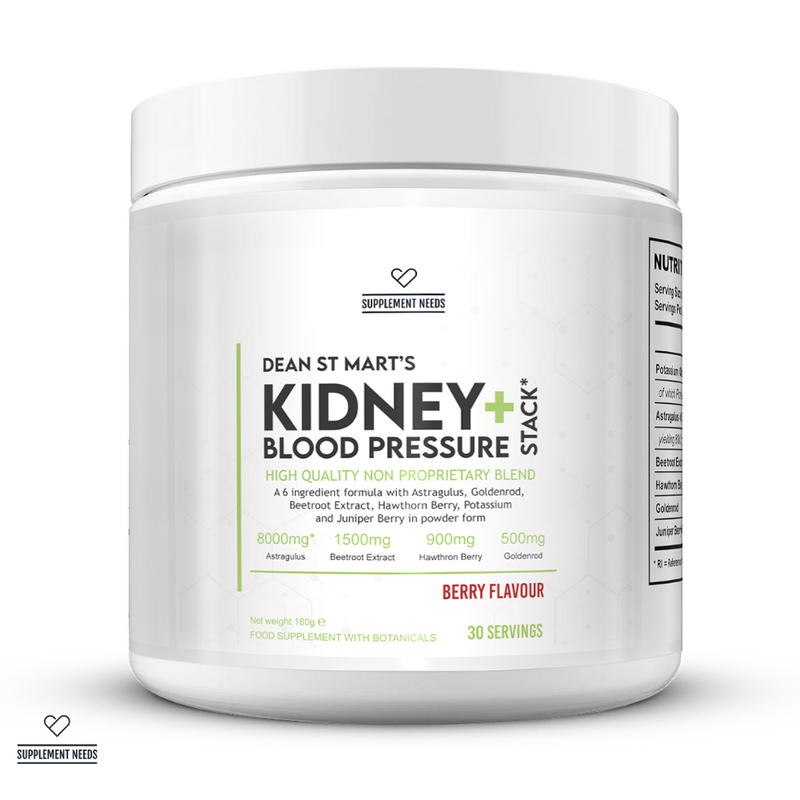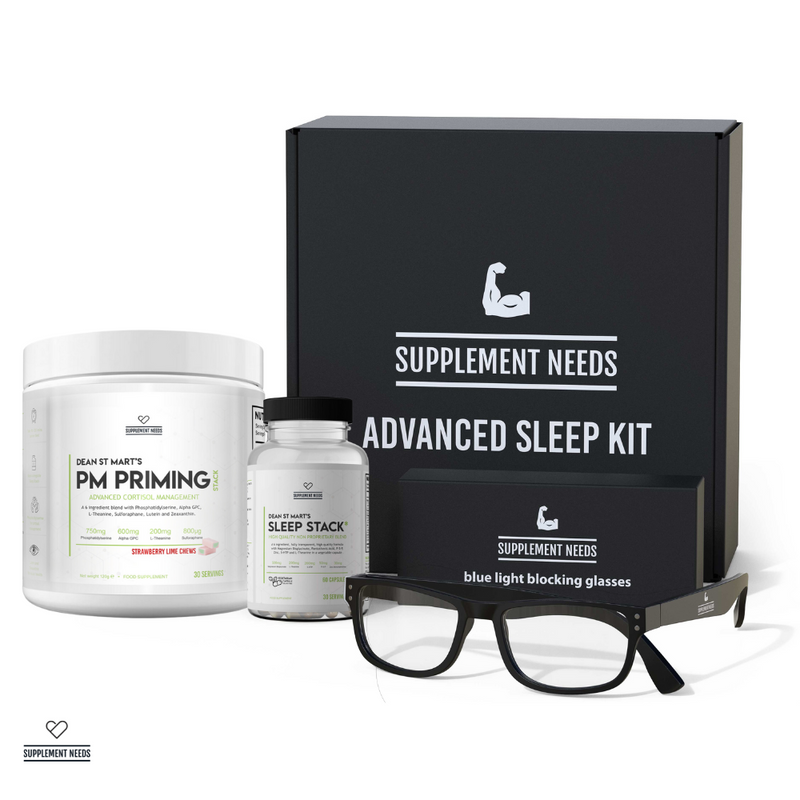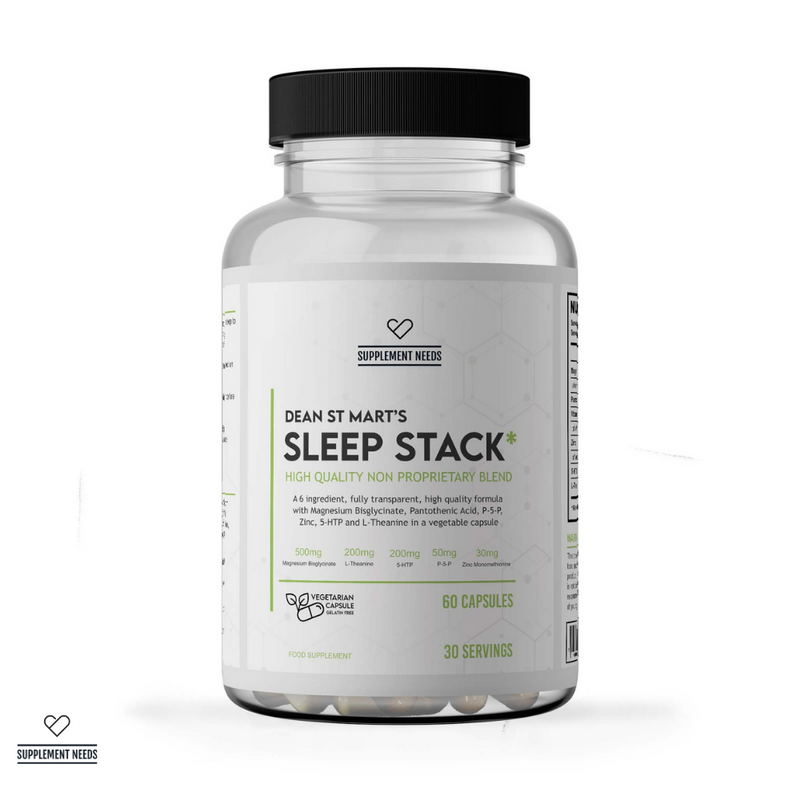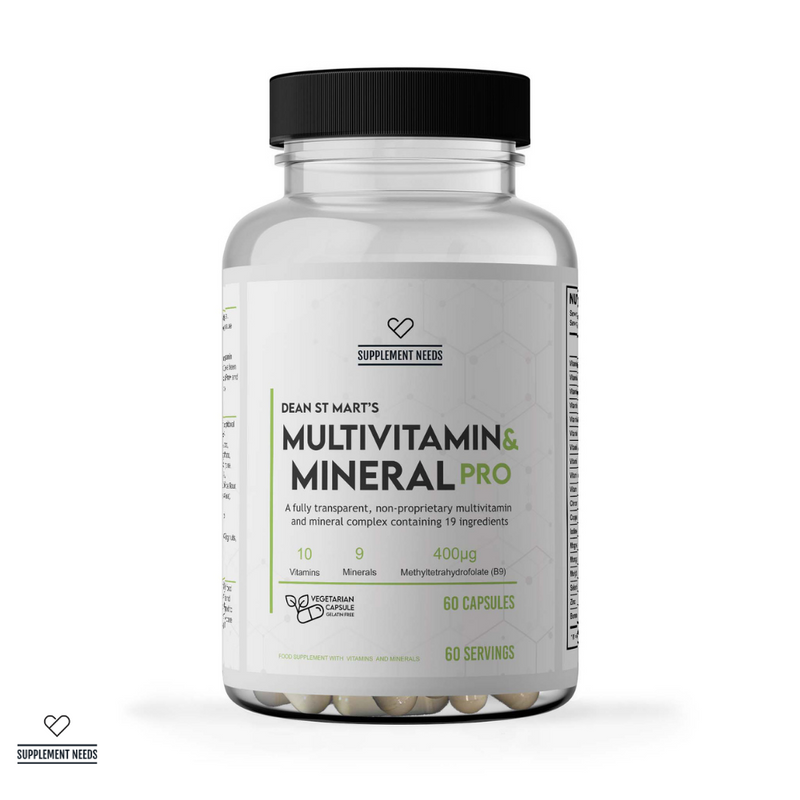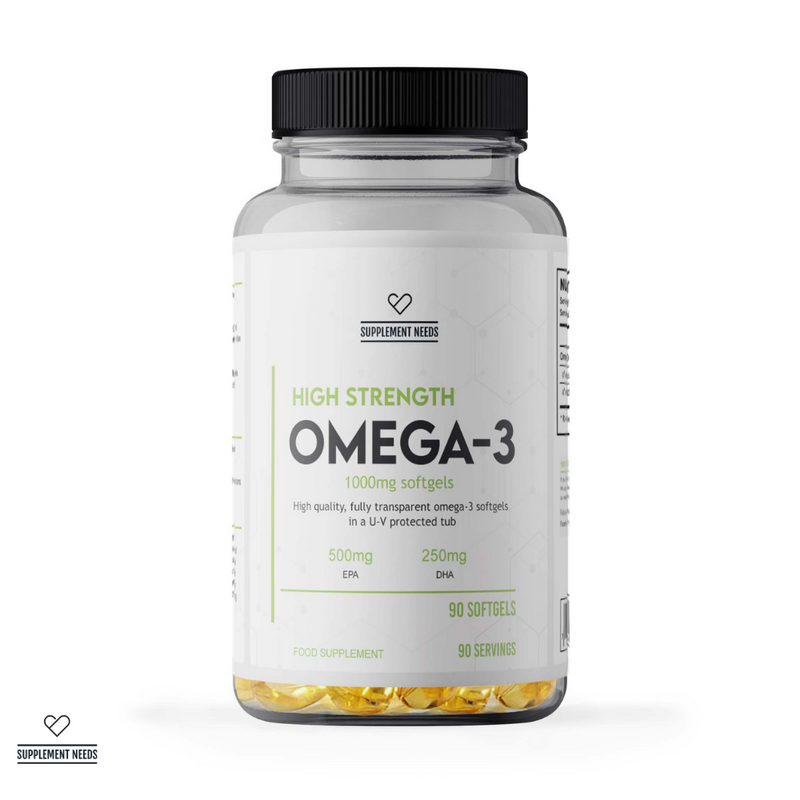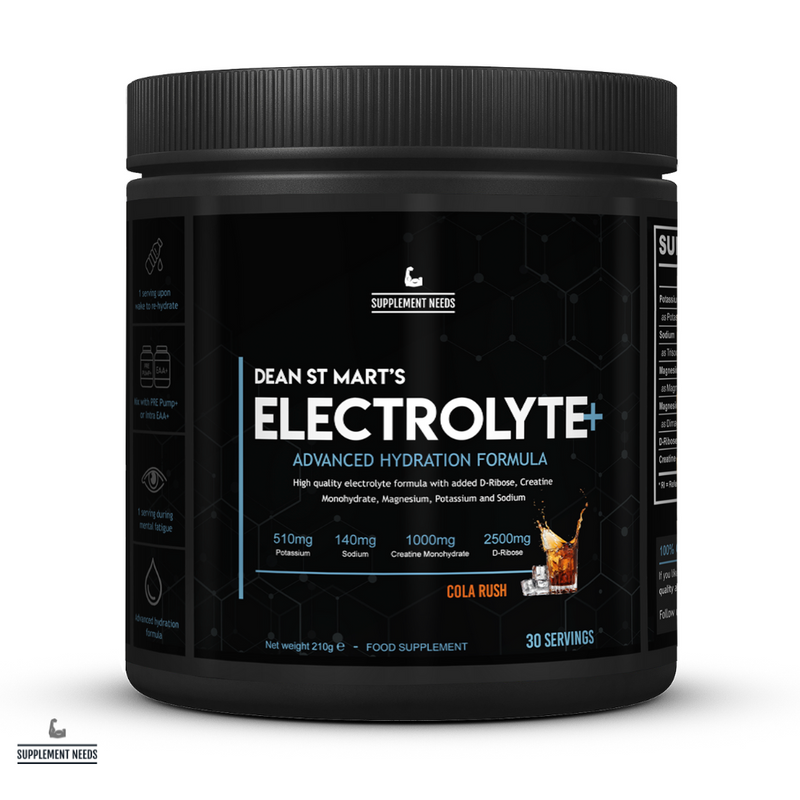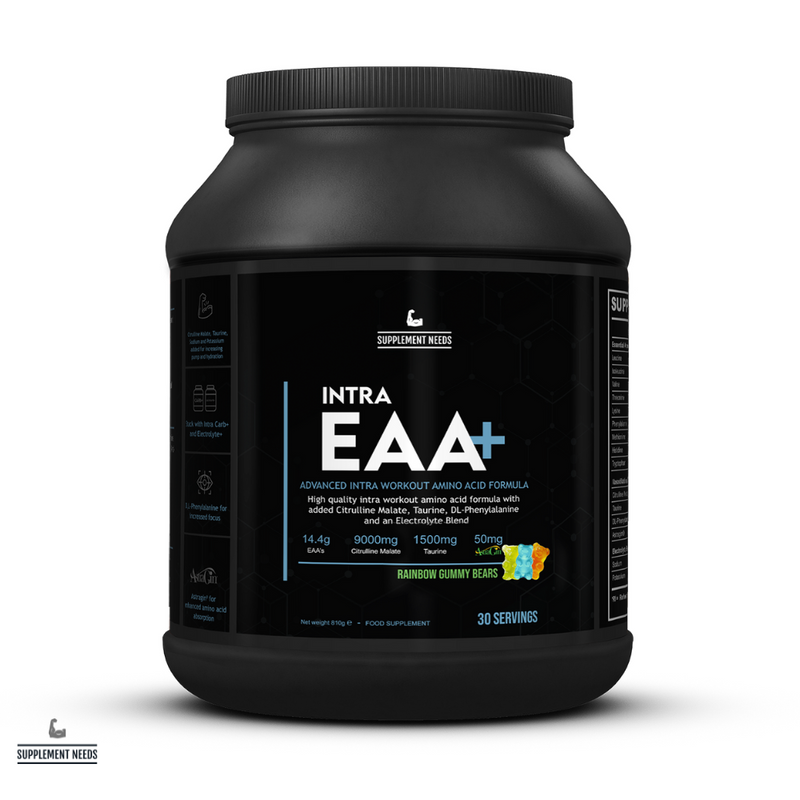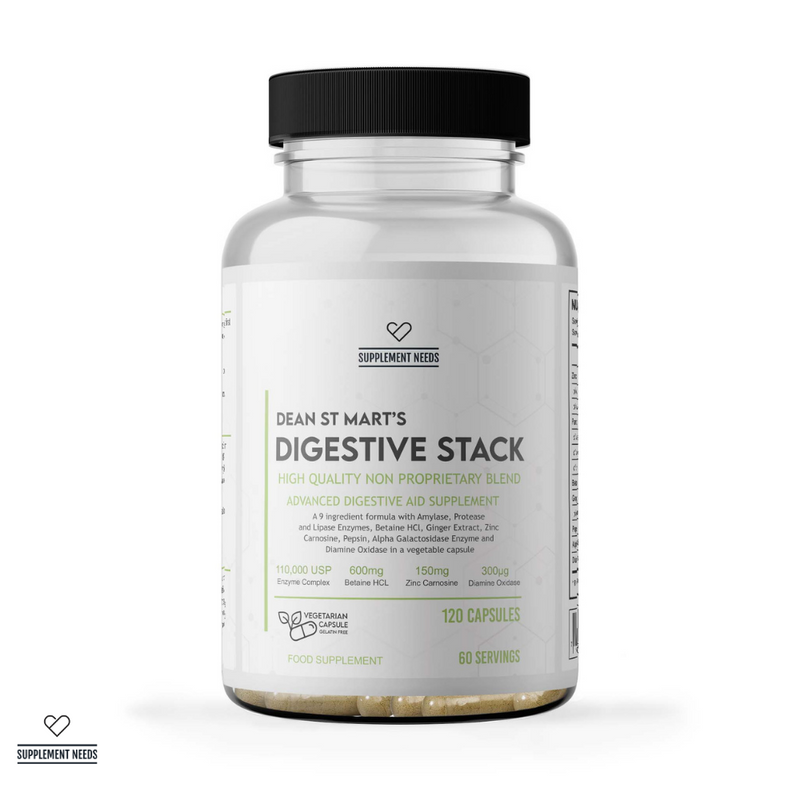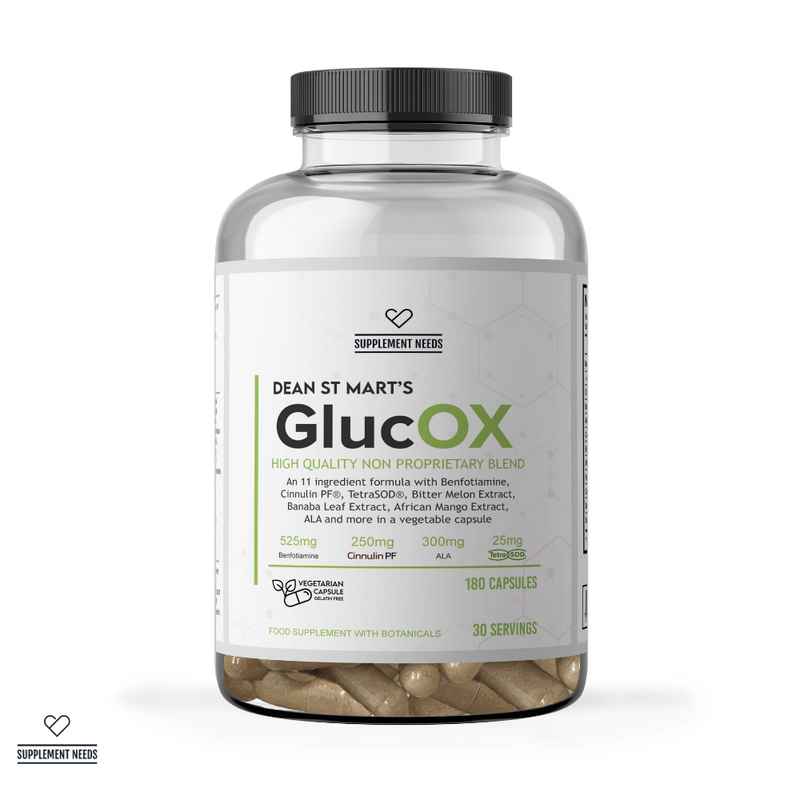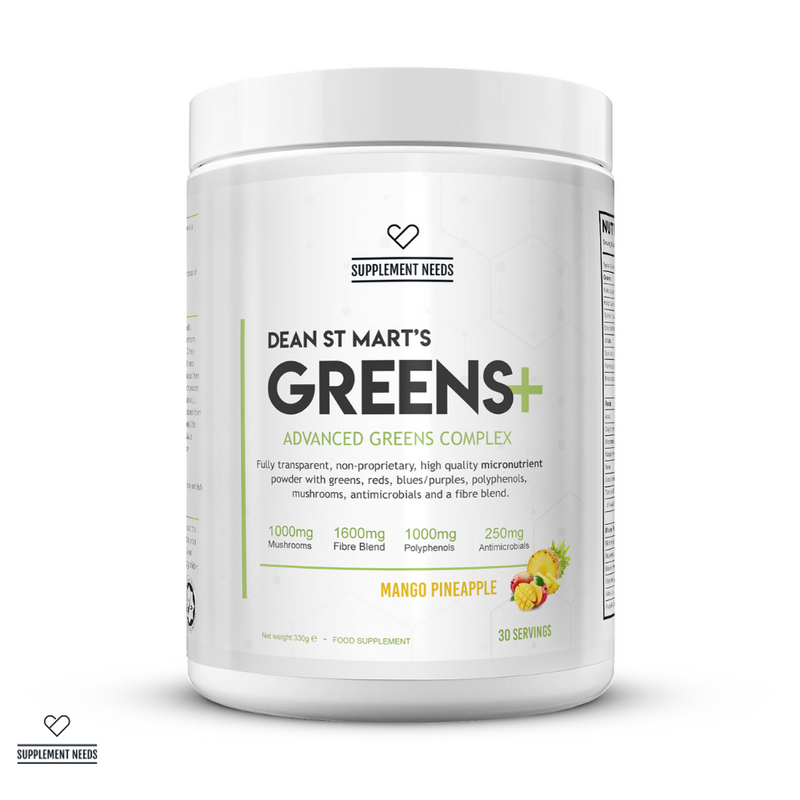The health of your gut and digestive system can have a bigger impact on your overall health than you may realise. It’s for that reason, some people choose to add gut and digestion-specific supplements to their diet. The thing is, what types of supplements are best for supporting gut health and digestion? The Supplement Needs team investigates…
Gut health: what you need to know
If you’re relatively new to the world of supplements, or if you’ve recently been told by a medical professional that you may benefit from taking better care of your gut health, you may be wondering what the term actually means.
So, what does gut health mean?
Let’s begin by defining the term ‘gut’. Gut refers to your gastrointestinal tract1 (you may see this written as ‘GI Tract’). Put in very simple terms, this refers to the passageway through your body that leads from your mouth to your anus.
The gastrointestinal tract (or, ‘gut’) is made up of all the major organs of the digestive system, and includes both ‘hollow’ and ‘solid’ organs. These are:
The hollow organs of the digestive system:
- Mouth and its constituent parts:
- Tongue.
- Salivary glands (Parotid, Submandibular, Sublingual).
- Pharynx.
- Oesophagus.
- Stomach.
- Small intestine:
- Duodenum.
- Jejunum.
- Ileum.
- Large intestine (also known as the colon):
- Appendix.
- Cecum.
- Transverse colon.
- Ascending colon.
- Descending colon.
- Rectum.
- Anus.
The solid organs of the digestive system:
- Liver.
- Pancreas.
- Gallbladder.
Note - whilst the solid organs play an important role within the gastrointestinal tract, they are sometimes grouped separately as the ‘biliary system’ along with your bile ducts.
As you can see, your gastrointestinal tract is a complex system involving multiple organs; all of which work together to process the food and drinks your body needs for its life-sustaining metabolic processes.
How does your gastrointestinal tract digest food?
So far, we’ve examined the various ‘parts’ of your digestive system. But, how do they work?
In a broad sense, digestion can be broken down into two forms:
- Mechanical digestion.
- Chemical digestion.
What is mechanical digestion?
As the name suggests, mechanical digestion refers to the physical process of breaking down foodstuffs. Your body does this via chewing (e.g. your teeth tearing foodstuffs).
Your body also mixes and squeezes foodstuffs via peristalsis2 (the involuntary contraction and relaxation of the longitudinal and circular muscles throughout the digestive tract). - this further mechanically breaks down your food.
What is chemical digestion?
Chemical digestion refers to the part of the digestion process where foodstuffs are mixed with digestive enzymes (such as in the stomach) so that they break down into a form that is absorbable into the bloodstream3.
It’s important to note that mechanical and chemical digestion don’t occur in isolation. They often work in tandem. The best example of this is the mouth. Whilst mechanical digestion involves your teeth tearing and chewing food, this is combined with chemical digestion as your salivary glands make saliva, a digestive juice which not only softens food, but triggers the breakdown of starches4.
The digestion process
Whilst that probably gives you an idea of the types of digestion, you may still be wondering about the exact process of digestion. So, below, we’ve set out a high level overview of the process of digestion:
-
Mouth - this is where the digestion process begins. Your teeth and saliva start the process of breaking down foods. After a period of mastication, you will swallow, whereby your tongue pushes the food down into your throat (aka the pharynx). As this is happening the epiglottis (a small flap of tissue) folds over your windpipe to prevent choking.
-
Oesophagus - as food passes through your pharynx into your oesophagus, peristalsis begins, and the food is automatically pushed down further into your digestive tract.
-
Lower oesophageal sphincter - where your oesophagus meets your stomach, it reaches the lower oesophageal sphincter, a ring-like muscle that relaxes to let food into the stomach. Think of it as being a kind of ‘doorway’ that lets food into the stomach, but doesn’t let the contents of your stomach back up into your oesophagus.
-
Stomach - once the food has reached your stomach it is mixed with a series of digestive juices (sometimes called Gastric Juices or Gastric Acids). These juices are made up of hydrochloric acid (HCI), lipase, and pepsin5 and are produced by glands in the stomach lining. Food will generally sit within the stomach from 40 minutes to two hours, by which point it will have turned into a pulpy acidic fluid called chyme.
-
Small intestine - once the chyme reaches the small intestine, it is mixed with digestive juices provided by the pancreas, liver and the intestine itself. Peristalsis pushes the chyme onward through the small intestine. The walls of the small intestine absorb both water and the digested nutrients from the chyme. As you’ll have read earlier, the small intestine is actually composed of three parts; the duodenum, the jejunum, and the ileum. The duodenum is where pancreatic enzymes and bile from the liver are introduced into the small intestine. The next section, the jejunum, is where the products of digestion are absorbed via villi (small finger-like projections that accommodate absorption). Finally, the ileum is where any final nutrients are absorbed6.
-
Large intestine - at this point the gastrointestinal tract will be dealing with the waste products of digestion. It’s the job of the large intestine to absorb water from the waste material, changing it from a liquid into stool. Peristalsis moves the stool into your rectum.
- Rectum - at the end of your large intestine is the rectum, where stool is stored until it is pushed out of your body during a bowel movement.
And, there we have the process of digestion.
The biliary system and digestion
As you’ve just read, there are many hollow organs involved in digestion. But, what about those solid organs? More specifically, the liver, pancreas, and gallbladder?
At the risk of oversimplifying things, the solid organs act like mini-factories producing the bile and enzymes that help your small intestine further digest foodstuffs.
First, let’s take a look at bile.
Bile is an important type of ‘emulsifier’ that helps your body break down fats into fatty acids which can then be subsequently absorbed by your intestines.
In more detailed terms, bile is considered to be a ‘complex aqueous secretion’ that ‘consists of ~95% water in which are dissolved a number of endogenous solid constituents including bile salts, bilirubin phospholipid, cholesterol, amino acids, steroids, enzymes, porphyrins, vitamins, and heavy metals, as well as exogenous drugs, xenobiotics and environmental toxins’7.
Of these constituent parts, it’s the bile salts that are primarily responsible for breaking down fats8.
Bile is produced by the liver. The secreted bile is collected by a series of ducts that flow from the liver, through the right and left hepatic ducts, with the bile ultimately draining into what’s known as the ‘common hepatic duct’.
This common hepatic duct then joins with the cystic duct from the gallbladder to form the common bile duct. This duct, in turn, runs from the liver to the first section of the small intestine (the duodenum).
However, not all the bile runs directly into the duodenum. A portion of the bile is stored for ‘later use’ in the gallbladder. When you next eat something, the gallbladder contracts and releases its stored bile into the small intestine, contributing to digestion.
That’s the liver and the gallbladder covered, but what does the pancreas do?
It’s the job of the pancreas to create ‘pancreatic enzymes’. It does this using ‘exocrine cells9’. These different enzymes include lipase (which works with bile to break down fats), protease (which breaks down proteins), and amylase (which breaks down starches into sugars). Once produced, these enzymes travel, via the pancreatic duct, on to the duodenum where they can contribute towards digestion.
In short, the biliary system has two key roles to play; to assist with digestion via the controlled secretion of bile, and to drain away waste products from the liver into the duodenum (and beyond).
So, that’s how both the solid and hollow organs of the gastrointestinal system work together to digest foods and liquids to support your body’s metabolic functions…
Why is your gut health important?
As we have seen, the gastrointestinal tract is a marvel of mother nature, it being a complex series of interconnected organs and processes.
But, it’ll only do its job optimally if it’s healthy. So, what does a healthy gut look like? To understand this, let’s take a quick tour of your body's nutrition requirements…
Firstly, in order for your body to function, it needs a sufficient supply of macro and micronutrients.
Macronutrients are the fats, carbohydrates and proteins your body needs in larger amounts to function. These macronutrients maintain the metabolic processes that keep us well10.
Micronutrients are the vitamins and minerals that play a number of important roles, from helping to release energy from the foods we eat, to supporting bodily processes such as DNA synthesis, wound healing, production of red blood cells and much, much more11.
However, in order to obtain the full ‘value’ of the proteins, carbs, fats, vitamins and minerals you consume, they must be digested.
To put it another way, it is the process of digestion that breaks down macro and micronutrients so that they can be used by the body. Here are some tangible examples11:
-
Proteins break down into amino acids - which are then used for the synthesis of body protein and the creation of important nitrogen-containing compounds13.
-
Fats break into fatty acids and glycerol - fatty acids being energy sources and membrane constituents14, whilst glycerol supports ATP production through gluconeogenesis15 (ATP captures the chemical energy obtained from the breakdown of food molecules and releases it to fuel cellular processes).
- Carbohydrates break down into simple sugars - these simple sugars are used to supply glucose to the brain and provide energy to cells16.
Sounds simple right?! Well, it is, provided your body is able to properly digest and break down food.
If your body is unable to properly digest and break down foodstuffs, this can have profound implications upon your wider health. Studies17 in recent years have suggested links between the health of your gut and:
- The immune system.
- Autoimmune diseases (such as rheumatoid arthritis, psoriasis and thyroid diseases).
- Endocrine disorders (such as Cushing’s syndrome, Graves’ disease and hyperthyroidism).
- Gastrointestinal disorders (such as Coeliac disease, Crohn’s disease, and gastritis).
- Cardiovascular disease.
- Cancer.
In short, gut health is far more important than many people realise.
The key to a healthy gut
So, how do you maintain a healthy gut? Is it difficult? No, with some thought and planning, there are some easy things you can do to ensure you maintain excellent good health.
Maintain a healthy diet
The first and arguably the easiest thing you can do is to maintain a healthy diet.
The UK’s National Health Service (NHS) suggests18 that a healthy gut can be maintained with a diet as follows:
- Eat plenty of fibre. Aim to hit the recommended dietary intake of 30g of fibre per day by eating foods such as wholemeal bread, fruit and vegetables, beans, and oats.
- Drink plenty of fluids. This will aid digestion and assist your gut.
- Cut back on fatty, greasy, processed foods such as chips and burgers.
- Some people may benefit from avoiding ‘trigger’ foods, such as spicy foods and acidic drinks. In some people, these foodstuffs can cause digestive stress.
Support your gut microbiome
Did you know that your body - and more specifically your gut - is home to bacteria, viruses and fungi?
These bacteria, viruses and fungi (that are often referred to more generically as microbes or microbiota) are collectively known as your ‘gut microbiome’.
Consisting of approximately 200 different species19, these microbes are predominantly found within the cecum (a section of the large intestine). In fact, there are so many of these microbes (they can weigh up to 2kg), some scientists consider your gut microbiome to be another organ as distinct from others in the body20.
The gut microbiome varies from person to person, and is determined by a range of factors including DNA, the microorganisms you are exposed to as you grow and develop and environmental exposures and diet. As some studies suggest21, higher microbiome diversity is considered good for your health.
These microbes play both beneficial and harmful roles within your body. The beneficial microbes live in your gut in a symbiotic relationship (meaning both the microbes and your gut benefit from ‘working together’). The harmful microbes exist in a pathogenic state (meaning they can have harmful effects upon your gut)22.
However, when your gut is in a state of health these microbes co-exist peacefully (with beneficial microbes outnumbering pathogenic microbes).
But, the peaceful co-existence of your symbiotic and pathogenic microbes can be thrown out of balance by certain illnesses, inflammation, lifestyle habits and environmental factors such as diet (high sugar, low fibre), xenobiotics (antibiotics, drugs, food additives), and hygiene.
When your gut microbiome is thrown out of balance in this way, it is known as dysbiosis23.
And, as you’ve probably already gathered, dysbiosis can result in negative health outcomes.
As studies24 have indicated, ‘an imbalance of the normal gut microbiota have been linked with gastrointestinal conditions such as inflammatory bowel disease (IBD) and irritable bowel syndrome (IBS), and wider systemic manifestations of disease such as obesity, type 2 diabetes and atopy’.
In short, you want to avoid dysbiosis and support the health of your gut microbiome. As we like to characterise it here at Supplement Needs, if you look after your gut microbiome, it’ll look after you!
Some people choose to support their gut microbiome by supplementing their diets with probiotics.
Probiotics are effectively cultures of the microbes that may already exist in your gut25. Think of a probiotic supplement as being a way to ‘top up’ your gut microbiome.
Whilst probiotics may contain a variety of microbes (including fungi such as yeasts), they typically mostly consist of bacteria belonging to groups such as Lactobacillus and Bifidobacterium.

If you want to buy a probiotic supplement to support your gut health, then there are a few important things to look for:
-
Should contain at least one billion colony-forming units (CFUs) per probiotic. These are the bacterial cells that you get in each dose. Here at Supplement Needs, our Probiotics supplement goes well beyond this, providing 16 strains of probiotic, each dosed at 3.215 billion colony-forming units to yield a total of 50 billion CFUs per capsule.
-
Should contain well-research strains. The best probiotic supplements contain thoroughly researched probiotics such as Lactobacillus and Bifidobacterium. As you’d expect, Supplement Needs Probiotic contains these strains.
-
Have accurate and reliable storage information. As probiotics are live cultures, it’s essential that you store them correctly. Keep them somewhere that’s too warm and you can kill them! At Supplement Needs our Probiotic supplement has been formulated to provide a 2-year storage life. It’s important to remember that the potency of probiotics can decline over time, so always check the shelf life of a probiotic supplement.
- Are available in capsule form. It’s only worth supplementing your diet with probiotics if they are actually able to reach your intestine! A probiotic supplement in capsule form is more likely to do this, as a capsule offers better protection against the gastric acids in the stomach that it will have to pass through. The Supplement Needs Probiotic supplement comes in the form of a hypromellose vegetable capsule.
Support enzyme production
As we saw earlier, various enzymes play an important role in the digestion process. Your stomach and pancreas in particular produce and secrete enzymes that help break down food and allow your body to absorb critical micro and macro nutrients.
However, you may decide to give your body a helping hand by adding a supplement to your diet that contains the precursors to many of the important digestive enzymes.
That’s why, here at Supplement Needs, our renowned product formulator, Dr. Dean St Mart PhD has created the Supplement Needs Digestive Stack. This is a 9 ingredient formula that has been designed to support overall stomach and digestive health.

Supplement Needs Digestive Stack
Supplement Needs Digestive Stack contains:
- Betaine Hydrochloride - this is a type of digestive enzyme that some studies26 suggest may support stomach acid production and thus aid digestion.
- Pancreatin - containing the important digestive enzymes amylase, protease, and lipase.
- Pepsin - an important stomach enzyme27 that serves to digest proteins in foodstuffs.
- Alpha Galactosidase - this particular enzyme has been found28 to help reduce digestive stress including flatulence and abdominal distention.
- Diamine Oxidase - this is another important digestive enzyme that helps to break down histamine from foods and thus potentially aid digestion. As one study29 has suggested, diamine oxidase can ‘improve symptoms in patients with histamine intolerance’.
- Ginger extract (from root) (Zingeber Officinale Roscoe) - ginger has long been viewed as a potential aid to indigestion, however this has been reinforced in recent years by studies30.
- Zinc Carnosine - this is a chelate compound of Zinc and L-carnosine which is claimed by a number of studies3132 to have beneficial effects on digestion.
The Supplement Needs Digestive Stack has also been developed in response to another issue that can arise in the stomach; Gastroesophageal Reflux Disease (GERD).
This is a condition that can arise due to insufficient stomach acid and result in several symptoms, including heartburn and even regurgitation33. But, why can your body end up with insufficient stomach acid? A common cause is damage to the ‘parietal cells’. These cells line the inside of your stomach and are mainly involved in the production of hydrochloric acid (aka stomach acid).
In addition to causing digestive issues, GERD can also have an impact upon the health of your small intestine. Why? Because one of the roles of stomach acid is to sterilise any pathogenic microbes that may have made their way down your gastrointestinal tract.
If there’s insufficient stomach acid, then pathogenic microbes may ‘get through’ the stomach and into your small intestine. This can result in Small Intestinal Bacterial Overgrowth (SIBO), which is a scenario in which your small intestine suffers from an abnormal increase in types of bacteria not commonly found in your gut microbiome.
SIBO (which can also be known as closed loop syndrome), can result in several negative consequences, including diarrhoea, weight loss and in the worst cases malnutrition. Over the longer term, SIBO can even contribute towards the development of osteoporosis34.
Thus, Supplement Needs Digestive Stack has been designed to support optimal digestive health.
Protect against inflammation
Your gut health can be impaired by inflammation. In fact, chronic inflammation in the gut can manifest as inflammatory bowel disease (IBD) (including Crohn's disease and ulcerative colitis) and Celiac disease35.
One way in which you can potentially protect against inflammation in the gut is by supplementing your diet with Glutamine.
Glutamine is the most abundant free amino acid in the body and ‘is a major substrate utilised by intestinal cells’, and also ‘suppresses pro-inflammatory signalling pathways’36.

Supplement Needs 100% Glutamine
Furthermore, Glutamine has been shown in recent research to positively affect gut health. It does this by supporting the gut microbiome, gut mucosal wall integrity, and by modulating inflammatory responses37.
Here at Supplement Needs, we appreciate the potential beneficial impact of Glutamine on digestion, which is why we have developed Supplement Needs 100% Glutamine. This has been formulated to deliver 5g of 100% Pure Glutamine per serving.
Looking for digestion supplements?
Then explore Supplement Needs’ Digestion Support products today. Our renowned expert Dr. Dean St Mart PhD has developed a range of digestion supplements that are backed by years of research.
All of Supplement Needs supplements are:
- Manufactured to GMP and ISO guidelines - ensuring our supplements are safe, efficacious and consistent ✅
- Transparently dosed - so you know exactly what you’re putting in your body ✅
- Formulated to include the highest-quality trademarked ingredients ✅
- Formulated to be easily absorbed by your body ✅
- Trusted by the best athletes ✅
-
Created by people who care ✅
Explore Supplement Needs’ Digestion Supplements now
Disclaimer
The information on this website should not be used as a substitute for professional medical advice or care. If you have questions about your health, please contact your doctor.
References
1. National Institute of Diabetes and Digestive and Kidney Diseases: Your Digestive System & How it Works [online]. Available at: https://www.niddk.nih.gov/health-information/digestive-diseases/digestive-system-how-it-works (Accessed on 11th December 2023).
2. National Library of Medicine: National Centre for Biotechnology Information. Physiology, Peristalsis [online]. Available at: https://www.ncbi.nlm.nih.gov/books/NBK556137/# (Accessed on 11th December 2023).
3. National Library of Medicine: National Centre for Biotechnology Information. Physiology, Digestion [online]. Available at: https://www.ncbi.nlm.nih.gov/books/NBK544242/# (Accessed on 11th December 2023).
4. National Institute of Diabetes and Digestive and Kidney Diseases. Your Digestive System & How it Works [online]. Available at: https://www.niddk.nih.gov/health-information/digestive-diseases/digestive-system-how-it-works (Accessed on 11th December 2023).
5. Martinsen T, Fossmark R, Waldum H. The Phylogeny and Biological Function of Gastric Juice - Microbiological Consequences of Removing Gastric Acid [online]. Available at: https://www.ncbi.nlm.nih.gov/pmc/articles/PMC6928904/# (Accessed on 11th December 2023).
6. National Library of Medicine: National Centre for Biotechnology Information. Anatomy, Abdomen and Pelvis, Small Intestine [online]. Available at: https://www.ncbi.nlm.nih.gov/books/NBK459366/ (Accessed on 11th December 2023).
7. Boyer J. Bile Formation and Secretion [online]. Available at: https://www.ncbi.nlm.nih.gov/pmc/articles/PMC4091928/ (Accessed on 11th December 2023).
8. Wenniger L, Pusl T, Beuers U. Bile Salts: Encyclopedia of Biological Chemistry. University of Amsterdam, Amsterdam, The Netherlands.
9. National Library of Medicine: National Centre for Biotechnology Information. How does the pancreas work? [online]. Available at: https://www.ncbi.nlm.nih.gov/books/NBK279306/ (Accessed on 11th December 2023).
10. Carreiro A, Dhillon J, Gordon S, Jacobs A, Higgins K, McArthur B, Redan B, Rivera R, Schmidt L, Mattes R. The macronutrients, appetite and energy intake [online]. Available at: https://www.ncbi.nlm.nih.gov/pmc/articles/PMC4960974/ (Accessed on 11th December 2023).
11. British Nutrition Foundation. Vitamins and minerals [online]. Available at: https://www.nutrition.org.uk/healthy-sustainable-diets/vitamins-and-minerals/?level=Consumer#inthebody (Accessed on 11th December 2023).
12. National Institute of Diabetes and Digestive and Kidney Diseases. Your Digestive System & How it Works [online]. Available at: https://www.niddk.nih.gov/health-information/digestive-diseases/digestive-system-how-it-works (Accessed on 11th December 2023).
13. National Library of Medicine: National Centre for Biotechnology Information. Protein and Amino Acids [online]. Available at: https://www.ncbi.nlm.nih.gov/books/NBK234922/# (Accessed on 11th December 2023).
14. Calder P. Functional Roles of Fatty Acids and Their Effects on Human Health [online]. Available at: https://pubmed.ncbi.nlm.nih.gov/26177664/# (Accessed on 11th December 2023).
15. Patlar S, Yalçin H, Boyali E. The Effect of Glycerol Supplements on Aerobic and Anaerobic Performance of Athletes and Sedentary Subjects [online]. Available at: https://www.ncbi.nlm.nih.gov/pmc/articles/PMC3590833/# (Accessed on 11th December 2023).
16. National Library of Medicine: National Centre for Biotechnology Information. Physiology, Carbohydrates [online]. Available at: https://www.ncbi.nlm.nih.gov/books/NBK459280/# (Accessed on 11th December 2023).
17. Hills R, Pontefract B, Mishcon H, Black C, Sutton S, Theberge C. Gut Microbiome: Profound Implications for Diet and Disease [online]. Available at: https://www.ncbi.nlm.nih.gov/pmc/articles/PMC6682904/ (Accessed on 12th December 2023).
18. NHS. Good foods to help your digestion [online]. Available at: https://www.nhs.uk/live-well/eat-well/digestive-health/good-foods-to-help-your-digestion/ (Accessed on 12th December 2023).
19. Hills R, Pontefract B, Mishcon H, Black C, Sutton S, Theberge C. Gut Microbiome; Profound Implications for Diet and Disease [online]. Available at: https://www.ncbi.nlm.nih.gov/pmc/articles/PMC6682904/ (Accessed on 12th December 2023).
20. Baquero F, Nombela C. The microbiome as a human organ [online]. Available at: https://pubmed.ncbi.nlm.nih.gov/22647038/# (Accessed on 12th December 2023).
21. Koenig J, Spor A, Fricker A, Stombaugh J, Knight R, Angenent L, Ley R. Succession of microbial consortia in the developing infant gut microbiome [online]. Available at: https://pubmed.ncbi.nlm.nih.gov/20668239/ (Accessed on 12th December 2023).
22. Harvard School of Public Health. The Microbiome [online]. Available at: https://www.hsph.harvard.edu/nutritionsource/microbiome/ (Accessed on 12th December 2023).
23. Hrncir T. Gut Microbiota Dysbiosis: Triggers, Consequences, Diagnostics and Therapeutic Options [online]. Available at: https://www.ncbi.nlm.nih.gov/pmc/articles/PMC8954387/# (Accessed on 12th December 2023).
24. Bull M, Plummer N. Part 1: The Human Gut Microbiome in Health and Disease [online]. Available at: https://www.ncbi.nlm.nih.gov/pmc/articles/PMC4566439/ (Accessed on 12th December 2023).
25. National Centre for Complementary and Integrative Health. Probiotics: What You Need to Know [online]. Available at: https://www.nccih.nih.gov/health/probiotics-what-you-need-to-know (Accessed on 12th December 2023).
26. Guilliams T, Drake L. Meal-Time Supplementation with Betaine HCI for Functional Hypochlorhydria: What is the Evidence? [online]. Available at: https://www.ncbi.nlm.nih.gov/pmc/articles/PMC7238915/ (Accessed on 12th December 2023).
27. National Library of Medicine: National Centre for Biotechnology Information. Physiology, Pepsin [online]. Available at: https://www.ncbi.nlm.nih.gov/books/NBK537005/# (Accessed on 12th December 2023).
28. Stefano M, Miceli E, Gotti S, Missanelli A, Mazzocchi S, Corazza G. The effect of alpha-galactosidase on intestinal gas production and gas-related symptoms [online]. Available at: https://pubmed.ncbi.nlm.nih.gov/17151807/ (Accessed on 12th December 2023).
29. Schnedl W, Schenk M, Lackner S, Enko D, Mangge H, Forster F. Diamine oxidase supplementation improves symptoms in patients with histamine intolerance [online]. Available at: https://www.ncbi.nlm.nih.gov/pmc/articles/PMC6859183/ (Accessed on 13th December 2023).
30. Giacosa A, Guido D, Grassi M, Riva A, Morazzoni P, Bombardelli E, Perna S, Faliva M, Rondanelli. The Effect of Ginger (Zingiber officinalis) and Artichoke (Cynara cardunculus) Extract Supplementation on Functional Dyspepsia: A Randomised, Double-Blind, and Placebo-Controlled Clinical Trial [online]. Available at: https://www.ncbi.nlm.nih.gov/pmc/articles/PMC4411465/ (Accessed on 13th December 2023).
31. Mahmood A, FitzGerald A, Marchbank T, Ntatsaki E, Murray D, Ghosh S, Playford R. Zinc carnosine, a health food supplement that stabilises small bowel integrity and stimulates gut repair processes [online]. Available at: https://www.ncbi.nlm.nih.gov/pmc/articles/PMC1856764/ (Accessed on 13th December 2023).
32. Hewlings S, Kalman D. A Review of Zinc-L-Carnosine and Its Positive Effects on Oral Mucositis, Taste Disorders, and Gastrointestinal Disorders [online]. Available at: https://www.ncbi.nlm.nih.gov/pmc/articles/PMC7146259/ (Accessed on 13th December 2023).
33. National Institute of Diabetes and Digestive and Kidney Diseases. Acid Reflux (GER & GERD) in Adults [online]. Available at: https://www.niddk.nih.gov/health-information/digestive-diseases/acid-reflux-ger-gerd-adults (Accessed on 14th December 2023).
34. Dukowicz A, Lacy B, Levine G. Small Intestinal Bacterial Overgrowth [online]. Available at: https://www.ncbi.nlm.nih.gov/pmc/articles/PMC3099351/# (Accessed on 14th December 2023).
35. National Library of Medicine: National Centre for Biotechnology Information. Inflammatory Bowel Disease [online]. Available at: https://www.ncbi.nlm.nih.gov/books/NBK470312/ (Accessed on 13th December 2023).
36. Kim M, Kim H. The Roles of Glutamine in the Intestine and Its Implications in Intestinal Diseases [online]. Available at: https://www.ncbi.nlm.nih.gov/pmc/articles/PMC5454963/ (Accessed on 13th December 2023).
37. Deters B, Saleem M. The role of glutamine in supporting gut health and neuropsychiatric factors [online]. Available at: https://www.sciencedirect.com/science/article/pii/S2213453021000112 (Accessed on 13th December 2023).
